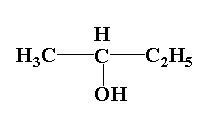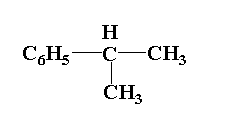
Which is optically active molecule:-
(1)

(2)

(3)

(4)





Answer
488.1k+ views
1 likes
Hint: The optically active molecule rotates the plane polarized light either on the left hand side or right hand side. The optical activity is shown by chiral compounds where the chiral carbon is bonded to four different atoms or groups.
Complete step by step answer:
Optically active compounds are those compounds which can rotate the plane polarized light either on the left side or right. If the compound rotates the plane polarized light to the right side then it is called dextrorotatory and when the compound rotates the plane polarized light to the left side then it is laevorotatory.
The optical activity is shown by chiral compounds. The chiral carbon is also known asymmetric carbon where the chiral carbon is attached to four different groups.
In compound (1), the central carbon is attached to three groups one is phenyl group, second is oxygen atom and third is hydroxyl group. Thus it is not an optically active molecule.
In compound (2), the central carbon is attached to four groups one is methyl group, second is ethyl group and third is hydroxyl group and forth is hydrogen atom. Thus it is an optically active molecule.
In compound (3), the central carbon is attached to three groups one is phenyl group, second is hydroxyl group and third is two hydrogen atoms. Thus it is not an optically active molecule.
In compound (4), the central carbon is attached to three groups one is phenyl group, second is hydrogen atom and third is two methyl groups. Thus it is not an optically active molecule.
Therefore, the correct option is 2.
Note:
The chiral molecules are always asymmetric in nature. The chiral compounds are those compounds which give non-superimposable mirror image.
Complete step by step answer:
Optically active compounds are those compounds which can rotate the plane polarized light either on the left side or right. If the compound rotates the plane polarized light to the right side then it is called dextrorotatory and when the compound rotates the plane polarized light to the left side then it is laevorotatory.
The optical activity is shown by chiral compounds. The chiral carbon is also known asymmetric carbon where the chiral carbon is attached to four different groups.
In compound (1), the central carbon is attached to three groups one is phenyl group, second is oxygen atom and third is hydroxyl group. Thus it is not an optically active molecule.
In compound (2), the central carbon is attached to four groups one is methyl group, second is ethyl group and third is hydroxyl group and forth is hydrogen atom. Thus it is an optically active molecule.
In compound (3), the central carbon is attached to three groups one is phenyl group, second is hydroxyl group and third is two hydrogen atoms. Thus it is not an optically active molecule.
In compound (4), the central carbon is attached to three groups one is phenyl group, second is hydrogen atom and third is two methyl groups. Thus it is not an optically active molecule.
Therefore, the correct option is 2.
Note:
The chiral molecules are always asymmetric in nature. The chiral compounds are those compounds which give non-superimposable mirror image.
Latest Vedantu courses for you
Grade 8 | CBSE | SCHOOL | English
Vedantu 8 CBSE Pro Course - (2025-26)
School Full course for CBSE students
₹45,300 per year
Recently Updated Pages
Master Class 12 Business Studies: Engaging Questions & Answers for Success

Master Class 12 English: Engaging Questions & Answers for Success

Master Class 12 Economics: Engaging Questions & Answers for Success

Master Class 12 Social Science: Engaging Questions & Answers for Success

Master Class 12 Maths: Engaging Questions & Answers for Success

Master Class 12 Chemistry: Engaging Questions & Answers for Success

Trending doubts
Which one of the following is a true fish A Jellyfish class 12 biology CBSE

Which are the Top 10 Largest Countries of the World?

a Tabulate the differences in the characteristics of class 12 chemistry CBSE

Why is the cell called the structural and functional class 12 biology CBSE

Differentiate between homogeneous and heterogeneous class 12 chemistry CBSE

Derive an expression for electric potential at point class 12 physics CBSE




